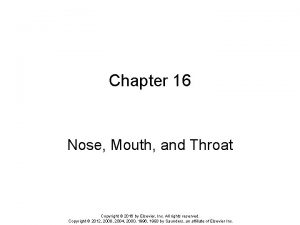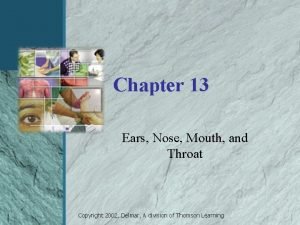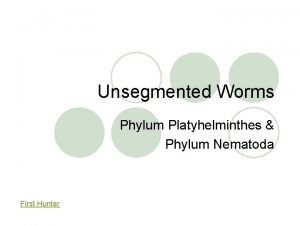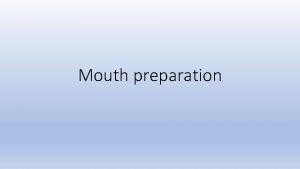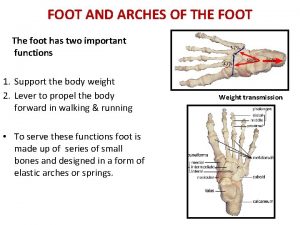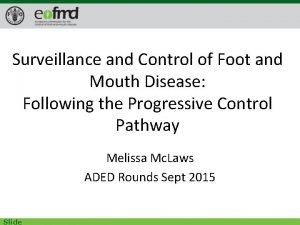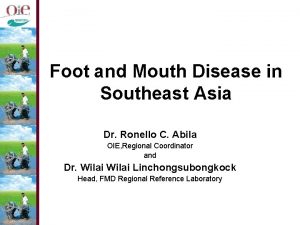FOOT AND MOUTH DISEASE Unit6Medicine 4 th Professional








- Slides: 8

FOOT AND MOUTH DISEASE Unit-6(Medicine) 4 th Professional Dr. Anil Kumar Asst. Professor Dept. of VCC

FOOT AND MOUTH DISEASE (Aphthous fever) • An acute, febrile, highly contagious disease of almost all cloven hoofed animals (Both domestic and wild animals)characterized by the formation of vesicles (fluid-filled blisters) and erosions in the mouth, nose, teats and feet. • high morbidity and low mortality Etiology: § positive sense, ss-RNA virus. § 7 serotypes of the virus: Types O, A, C, South African Territories 1, 2 and 3 (SAT-1, -2, -3) and Asia-1 § India-four major serotypes, O, A, C and Asia 1 § Infection with one serotype does not confer immunity against another Host: § Cattle >pigs > § the disease is rare in sheep and goats § Horse is refractory to infection

Transmission: § Inhalation and aerosol route § Direct or indirect contact with infected animals such as through abraded skin, conjunctiva, ingestion of contaminated garbage § Mechanical transmission may also occur § Primary bovine tongue epithelium or bovine thyroid cells, primary pig kidney, calf kidney and lamb kidney cells are used for propagation. § Cell lines such as Baby Hamster Kidney-21 (BHK-21) and IB-RS-2 cells are highly suitable § Experimental animals (Guinea pigs, suckling mice, hamsters and rabbits)

Veterinary Infectious Diseases

Symptoms: § Fall in milk yield and a high fever (40410 C) accompanied by loss of appetite, depression. § Followed by appearance of painful stomatitis and the temperature subsides § Profuse salivation, the saliva hanging in long, ropy strings § Smacking of the lips § Vesicles (containing straw coloured fluid) appear on the buccal mucosa, dental pad, udder and tongue. feet, particularly in the clefts and on the coronet Courtsey: Dr. G. Selvaraju and Dr. M. Geetha, TANUVAS

Sequel: § Anemia § Over growth of hair § Lack of heat tolerance described as panting § Myocardial degeneration (Tigroid heart)and death in calves Sheep and goats • There is sudden and acute lameness. • The vesicles formed in the interdigital space and rupture in about 2 -3 days. • Sometimes, the upper layer of the hoof is lost. • Oral lesions are rare or the tongue may only be affected and upper palate but there is no salivation Pigs • Lesions occur in the snout and feet and these may rupture to expose large raw surface. • Lameness is the first sign. • The foot lesions are very painful. • Vesicles in the mouth are very less prominent.

DIAGNOSIS: • Profuse salivation and vesicles with blanched covering epithelium filled with a clear straw colour fluid are pathognomonic. • By Serological tests: ü Complement fixation test (CFT)-To know the type ü Enzyme Linked Immunosorbent Assay (ELISA) and Polymerase Chain Reaction (PCR) • Mouse inoculation Differential Diagnosis:

Control: • Spread by air borne route-difficult, but movement of livestock is to be stopped • In non- endemic areas policy of quarantine, slaughter and disinfection is effective and economical. • Vaccines may be monovalent, bivalent, trivalent or polyvalent • two • 2 Inoculations are required, at 2 -4 weeks apart, followed by revaccination every 4 -12 months o achieve good level of immmunity. • first vaccination to calves is given at the age of 4 months, followed by booster at 2 -4 weeks interval, revaccination every 6 months or 4 -12 months once • Sheep and pigs vaccinated at 6 months of age and the dose is 1/3 rd of cattle • The first vaccination leads to immunity in ruminants for about 3 -6 months. Subsequent vaccinations may give protection for a year in cattle but only about 6 months in sheep.




